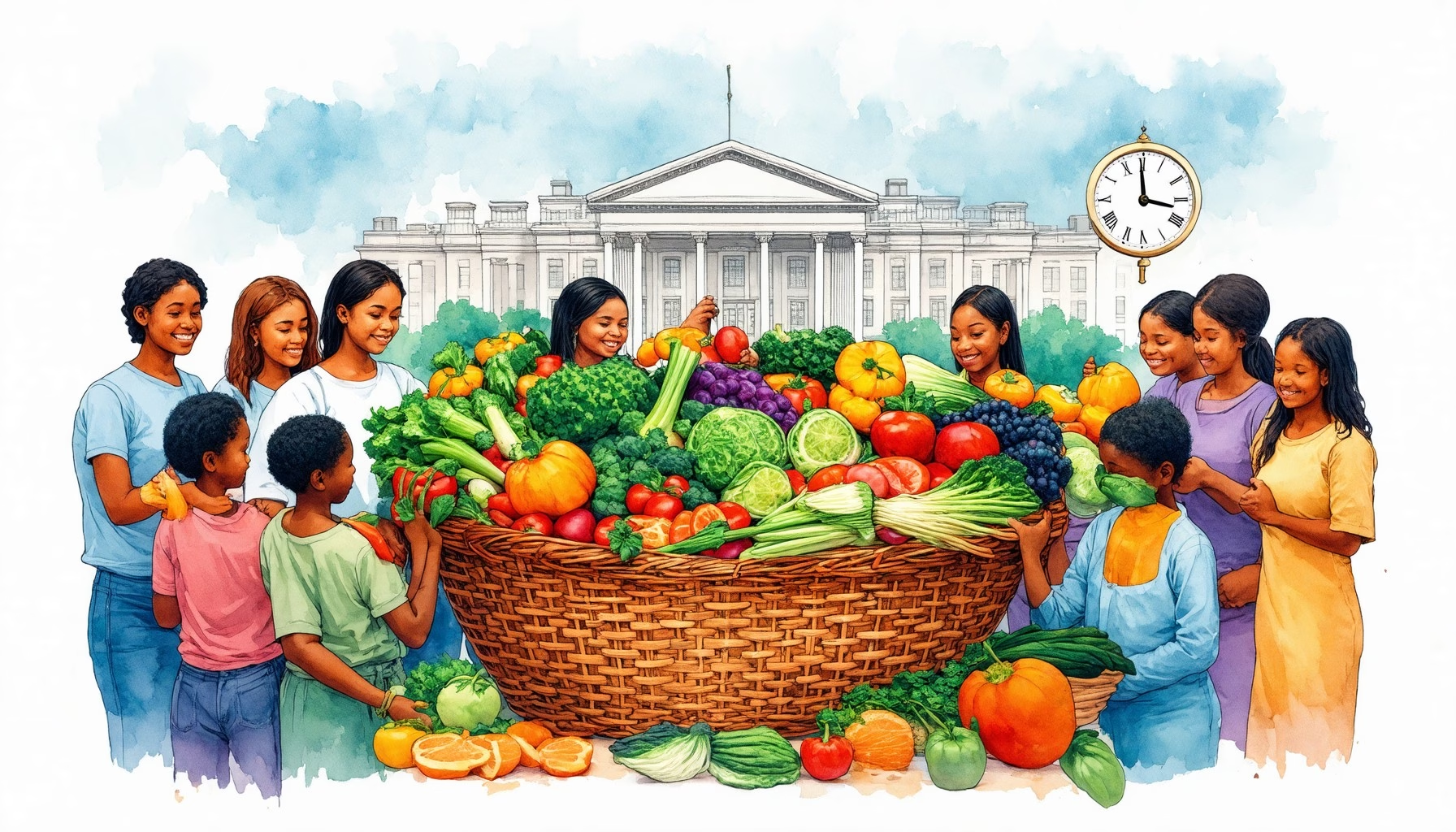Key Takeaways
- Learn about SNAP eligibility criteria, including income and asset limits, to determine if you qualify for government food stamp assistance.
- Understand the various benefits of SNAP, such as monthly allowances and access to nutrition education, to maximize your support.
- Discover the reasons behind low food stamp amounts and how income calculations impact your benefits.
- Explore state-specific variations in EBT qualifications to better understand your local application process and potential benefits.
- Identify common disqualifications for food stamps to ensure you meet all necessary criteria for assistance.
- Get insights on the application timeline for SNAP in Washington state, with expedited services available for urgent needs.
- Access additional resources, including the Emergency Food Assistance Program, for comprehensive support in food insecurity.
In today’s challenging economic landscape, understanding government food stamp assistance is crucial for many families seeking support. This comprehensive guide will delve into the intricacies of the Supplemental Nutrition Assistance Program (SNAP), exploring essential topics such as eligibility criteria, benefits, and the application process. Whether you’re wondering who qualifies for EBT in Washington state or why your monthly benefits might be as low as $23, this article aims to provide clear answers and valuable insights. We will also examine the factors that affect SNAP payments, compare benefits across states, and highlight common disqualifications for the food stamp program. By the end of this article, you will have a thorough understanding of how to navigate the food stamps system and access the resources available to you through the government food stamp program.
Who qualifies for EBT in Washington state?
Understanding who qualifies for the Electronic Benefits Transfer (EBT) program in Washington State is essential for those seeking assistance through the Supplemental Nutrition Assistance Program (SNAP). This program provides vital support to low-income individuals and families, ensuring they have access to nutritious food. Below, we explore the key qualifications for EBT in Washington State.
Understanding EBT and Food Stamps
To qualify for the Electronic Benefits Transfer (EBT) program in Washington State, applicants must meet several criteria:
- Residency: You must be a resident of Washington State.
- Citizenship Status: Applicants must be U.S. citizens or meet specific requirements for non-citizens. This includes legal immigrants who have been in the U.S. for at least five years. Note that undocumented immigrants are not eligible for the Supplemental Nutrition Assistance Program (SNAP).
- Income Limits: Household income must be at or below certain thresholds, which vary based on household size. These limits are determined by both gross income (total income before deductions) and net income (total gross income minus allowable deductions). For 2023, the gross monthly income limit for a household of one is approximately $1,473, while for a household of four, it is around $3,015.
- Asset Limits: Households must have assets below specific limits, which differ based on whether the household includes an individual aged 60 or older or someone with a disability. Generally, the asset limit is $2,500 for households without these individuals and $3,750 for those that do.
- Work Requirements: If you are an adult without children and are able to work, you may be required to participate in a work program to maintain your benefits.
- Social Security Number: You must have a Social Security number or be in the process of applying for one.
For more detailed information, you can visit the SNAP website or consult resources like Gov Guider, which can provide guidance on eligibility and application processes.
Overview of the SNAP Program Benefits
The SNAP program offers a range of benefits designed to help low-income households access nutritious food. Key benefits include:
- Monthly Allowance: Eligible households receive a monthly benefit amount that can be used to purchase food items. This is often referred to as “SNAP money.”
- Wide Range of Eligible Foods: SNAP benefits can be used to buy a variety of foods, including fruits, vegetables, meat, dairy, and bread. Certain items, like alcohol and non-food items, are not eligible.
- Access to Nutrition Education: Many states, including Washington, offer nutrition education programs to help SNAP recipients make healthier food choices.
- Support for Local Farmers: SNAP benefits can also be used at farmers’ markets, promoting local agriculture and providing fresh produce to participants.
Understanding the SNAP program benefits is crucial for maximizing the support available to you and your family. For further insights into the SNAP program, visit the Gov Guider for comprehensive resources.

Why do I only get $23 a month for food stamps?
Receiving only $23 a month in food stamps can be disheartening, but it typically indicates that you are at or very near the income threshold for eligibility. Here are some key points to understand this situation better:
- Minimum Benefit Issuance: The Supplemental Nutrition Assistance Program (SNAP), commonly known as food stamps, has a minimum benefit amount. As of recent regulations, this minimum is often around $23, which is calculated based on your household income, size, and expenses. If your income is just above the cutoff, you may receive this minimum amount.
- Income Calculation: SNAP benefits are determined by a formula that considers your gross and net income, household size, and allowable deductions (like housing costs and childcare expenses). If your income is slightly above the threshold, it can significantly reduce your benefits. For example, the USDA states that households with a net income above 130% of the federal poverty level may receive reduced benefits.
- Impact of Deductions: Understanding the deductions you can claim is crucial. Certain expenses, such as medical costs for elderly or disabled members, can increase your net income calculation, potentially raising your benefit amount.
- State Variations: Benefit amounts and eligibility criteria can vary by state. It’s essential to check with your local SNAP office or their website for specific guidelines. Resources like Gov Guider can provide additional information on how to maximize your benefits and understand your eligibility.
- Emotional Impact: Many individuals express feelings of frustration when receiving minimal benefits, often feeling that it is inadequate support. It’s important to know that you are not alone in this experience, and there are community resources available to help supplement your food needs.
For more detailed information, you can refer to the USDA’s official SNAP guidelines or your state’s SNAP website for personalized assistance and resources.
Factors Affecting SNAP Benefits
Several factors influence the amount of SNAP benefits you receive. Understanding these can help you navigate the system more effectively:
- Household Size: The number of people in your household directly affects your SNAP benefit amount. Larger households generally qualify for higher benefits.
- Income Level: Your total household income, including wages, Social Security, and other sources, is a critical factor. If your income is above the threshold, your benefits will decrease.
- Expenses: Allowable deductions, such as rent, utilities, and childcare costs, can lower your net income, potentially increasing your SNAP benefits. Understanding what qualifies as a deduction is essential.
- State Regulations: Each state may have different rules regarding SNAP benefits, including how income and expenses are calculated. It’s important to consult your local SNAP program for specific information.
How SNAP Payments are Calculated
The calculation of SNAP payments involves a detailed process that considers various elements:
- Gross Income: This is your total income before any deductions. It includes wages, pensions, and other sources of income.
- Net Income: After allowable deductions are applied to your gross income, the remaining amount is your net income. This figure is crucial for determining your eligibility and benefit amount.
- Benefit Formula: The SNAP benefit amount is calculated using a specific formula that takes into account your net income and household size. The USDA provides guidelines on how this formula works.
- Adjustments for Special Circumstances: Households with elderly or disabled members may qualify for additional deductions, which can increase their SNAP benefits.
For more information on how to apply for food stamp benefits and understand the calculations involved, visit Gov Guider’s application guide.
How much do you get for one person on SNAP?
The Supplemental Nutrition Assistance Program (SNAP), formerly known as food stamps, provides financial assistance to eligible individuals and families to help them purchase food. The amount a single person can receive from SNAP varies based on several factors, including income, household size, and expenses. As of October 2023, the maximum monthly benefit for one person is approximately $281. However, the actual amount may be lower depending on the individual’s net income and allowable deductions, such as housing costs and childcare expenses.
To determine eligibility and benefit amounts, individuals can use the USDA’s SNAP eligibility calculator or consult local SNAP offices. It’s important to note that benefits can also be adjusted annually based on changes in the cost of living.
SNAP Benefit Amounts Explained
Understanding how SNAP benefits are calculated is crucial for individuals seeking assistance. The SNAP benefit amount is determined by the Thrifty Food Plan, which estimates the cost of a nutritious diet for a household. Factors influencing the benefit amount include:
- Household Size: Larger households typically receive higher benefits due to increased food needs.
- Net Income: The calculation considers the household’s net income after allowable deductions, such as housing and childcare expenses.
- State Variations: Each state may have different policies regarding SNAP payments, which can affect the total benefits received.
For more information on how SNAP payments are calculated, you can visit the Understanding food stamp government benefits page.
Comparing SNAP Benefits Across States
SNAP benefits can vary significantly from one state to another. This variation is due to differences in the cost of living, state policies, and the local economy. For instance, states with higher living costs may offer more substantial benefits to help residents meet their nutritional needs. It’s essential to compare SNAP benefits across states to understand what you might expect based on your location.
To explore how SNAP benefits differ by state, you can refer to the Food Stamps (SNAP) benefits information page. This resource provides insights into the specific benefits available in each state, helping you make informed decisions about your eligibility and potential assistance.
Who is eligible for EBT in Kentucky?
Eligibility for the Electronic Benefits Transfer (EBT) program in Kentucky, which provides assistance through the Supplemental Nutrition Assistance Program (SNAP), is determined by several key criteria:
- Citizenship/Residency: Applicants must be U.S. citizens or legal foreign residents. Additionally, proof of residency in Kentucky is required.
- Income Limits: Your household’s gross monthly income must fall below specific thresholds, which vary based on household size. For example, a single-person household can earn up to $1,580 per month.
- Asset Limits: Households must have total cash and bank account assets below $2,750. If a household member is 60 or older or disabled, this limit increases to $4,250. Assets such as your home, personal belongings, and vehicles are not counted.
- Work Requirements: Individuals aged 18 to 59 who are able to work must generally register for work, actively seek employment, and accept job offers, with certain exceptions.
- Household Size: SNAP eligibility is assessed based on the number of individuals living together who purchase and prepare food together.
- Application Process:
- Complete the SNAP Application: Applications can be initiated online or in person at a Department of Community Based Services (DCBS) office, as outlined by the Kentucky Cabinet for Health and Family Services (CHFS).
- Schedule an Interview: An interview, either in person or by phone, is typically required to verify the information provided in the application.
- Gather Required Documents: Applicants should prepare to present proof of identity, residency, household income, and expenses.
- Use of Benefits: SNAP benefits can be utilized to purchase eligible food items, including groceries, seeds, and plants for home gardening. However, benefits cannot be used for hot, ready-to-eat foods, alcohol, or non-food items. Approved applicants receive benefits via an EBT card, which operates similarly to a debit card.
For more detailed information and assistance, applicants can visit the Kentucky Cabinet for Health and Family Services website or contact their local DCBS office.
Differences in EBT Qualifications by State
While the eligibility criteria for the government food stamp program, known as SNAP, are generally consistent across the United States, there are notable differences in EBT qualifications by state. Factors such as income limits, asset limits, and specific application processes can vary significantly. For instance, some states may have higher income thresholds or different asset limits, impacting how many individuals qualify for food stamps.
Additionally, states may implement unique programs or incentives to encourage participation in the SNAP program. Understanding these differences is crucial for applicants, especially those who may be relocating or comparing benefits across state lines. To explore how EBT qualifications differ in your state, visit the SNAP website for comprehensive resources and state-specific information.

What Disqualifies You from EBT?
Understanding the disqualifying factors for the Supplemental Nutrition Assistance Program (SNAP), commonly referred to as EBT (Electronic Benefits Transfer), is crucial for those seeking government food stamp assistance. Various criteria can render an individual ineligible for food stamps, impacting their access to essential nutrition assistance. Here are the primary categories of individuals who are ineligible for SNAP benefits:
Common Reasons for EBT Disqualification
- Individuals on Strike: Those participating in a labor strike are not eligible for SNAP benefits, regardless of their financial situation.
- Undocumented Immigrants: Individuals without documented immigration status cannot qualify for SNAP. This includes those who have not been granted lawful permanent residency or other eligible immigration statuses.
- Certain College Students: Students attending college more than half-time may be disqualified unless they meet specific criteria, such as being a single parent or working a certain number of hours per week.
- Certain Immigrants: Some lawful immigrants, such as those who have not met the five-year residency requirement, may also be ineligible for SNAP benefits.
- Individuals with Drug Felonies: In many states, individuals with felony drug convictions may face restrictions on their eligibility for SNAP benefits, although this can vary by state.
- Individuals with Specific Income Levels: Those whose income exceeds the federal poverty guidelines or who possess significant assets may not qualify for assistance.
Understanding Food Stamp Qualifications
To navigate the complexities of the food stamp program effectively, it’s essential to understand the qualifications required for SNAP benefits. The SNAP program is designed to assist low-income individuals and families in purchasing nutritious food. However, specific income limits and asset tests apply. For example, if I make $1,800 a month, I may still qualify for food stamps depending on my household size and expenses. It’s advisable to consult the SNAP website for detailed guidelines on income eligibility and to explore the understanding food stamp government benefits page for further insights.
How long does it take to get approved for food stamps in Washington state?
In Washington state, the approval process for food stamps, officially known as the Supplemental Nutrition Assistance Program (SNAP), typically takes up to 30 days from the date of application submission. However, the exact timeframe can vary based on several factors, including the completeness of the application and the promptness of the applicant in providing necessary documentation.
Application Process for the SNAP Program
- Application Processing Time: Most food stamp applications are processed within 30 days. For expedited services, eligible applicants may receive benefits within 7 days.
- Factors Influencing Approval Time: The speed of processing is contingent upon how quickly the Washington State Department of Social and Health Services (DSHS) can gather and verify the required information to assess eligibility. If additional information is needed, delays may occur.
- Special Cases: Applications related to pregnancy medical benefits are generally processed within 15 working days.
For more detailed information and assistance, applicants can visit the Washington DSHS website or utilize resources like Gov Guider, which provides guidance on navigating the application process. It is crucial to ensure that all required documents are submitted promptly to avoid delays in receiving benefits.
Timeline for SNAP Approval and Benefits
The timeline for receiving SNAP benefits can significantly impact applicants’ ability to access necessary nutrition assistance. Understanding this timeline helps individuals plan accordingly:
- Initial Application: After submitting your application, expect a processing time of up to 30 days, barring any complications.
- Expedited Services: If you qualify for expedited services, you could receive your benefits within just 7 days, which is crucial for those facing immediate food insecurity.
- Documentation Requirements: Ensure that all required documentation is submitted with your application to avoid delays. Missing information can extend the approval process.
For further insights into the SNAP program and its benefits, you can explore the Supplemental Nutrition Assistance Program (SNAP) for comprehensive details.
U.S. Government Food Assistance Programs
The U.S. government offers various food assistance programs designed to support individuals and families in need. These programs aim to alleviate food insecurity and ensure access to nutritious food. Understanding these initiatives can help you navigate available resources effectively.
Overview of the Emergency Food Assistance Program
The Emergency Food Assistance Program (TEFAP) is a federal program that provides food assistance to low-income individuals and families. TEFAP works in conjunction with the Supplemental Nutrition Assistance Program (SNAP) to distribute food through local food banks and community organizations. This program is crucial for those who may not qualify for SNAP benefits or need additional support.
- Eligibility: TEFAP is available to individuals and families whose income is at or below 185% of the federal poverty level. This makes it accessible to a wide range of low-income households.
- Food Distribution: Food is distributed through local agencies, including food banks and pantries. These organizations often provide a variety of food items, including fresh produce, dairy, and canned goods.
- Application Process: Unlike SNAP, there is no formal application for TEFAP. Individuals can access food directly from participating agencies. It is advisable to contact local food banks to find out about availability and distribution schedules.
Government Food Card for Seniors and Other Resources
In addition to TEFAP, the government provides specific resources aimed at assisting seniors and vulnerable populations. The Senior Farmers’ Market Nutrition Program (SFMNP) is one such initiative that offers eligible seniors access to fresh, locally grown fruits and vegetables through coupons redeemable at farmers’ markets.
- Eligibility for SFMNP: Seniors aged 60 and older with incomes at or below 185% of the federal poverty level can qualify for this program. It is designed to promote healthy eating among older adults.
- Additional Resources: Various state and local programs also offer food assistance, including home-delivered meals and nutrition education. For more information on these resources, you can visit the SNAP website or contact your local food stamps office.
Understanding these government food assistance programs can empower you to make informed decisions about accessing the support you need. If you are unsure about your eligibility or how to apply, resources like Navigating government assistance with food can provide valuable guidance.




